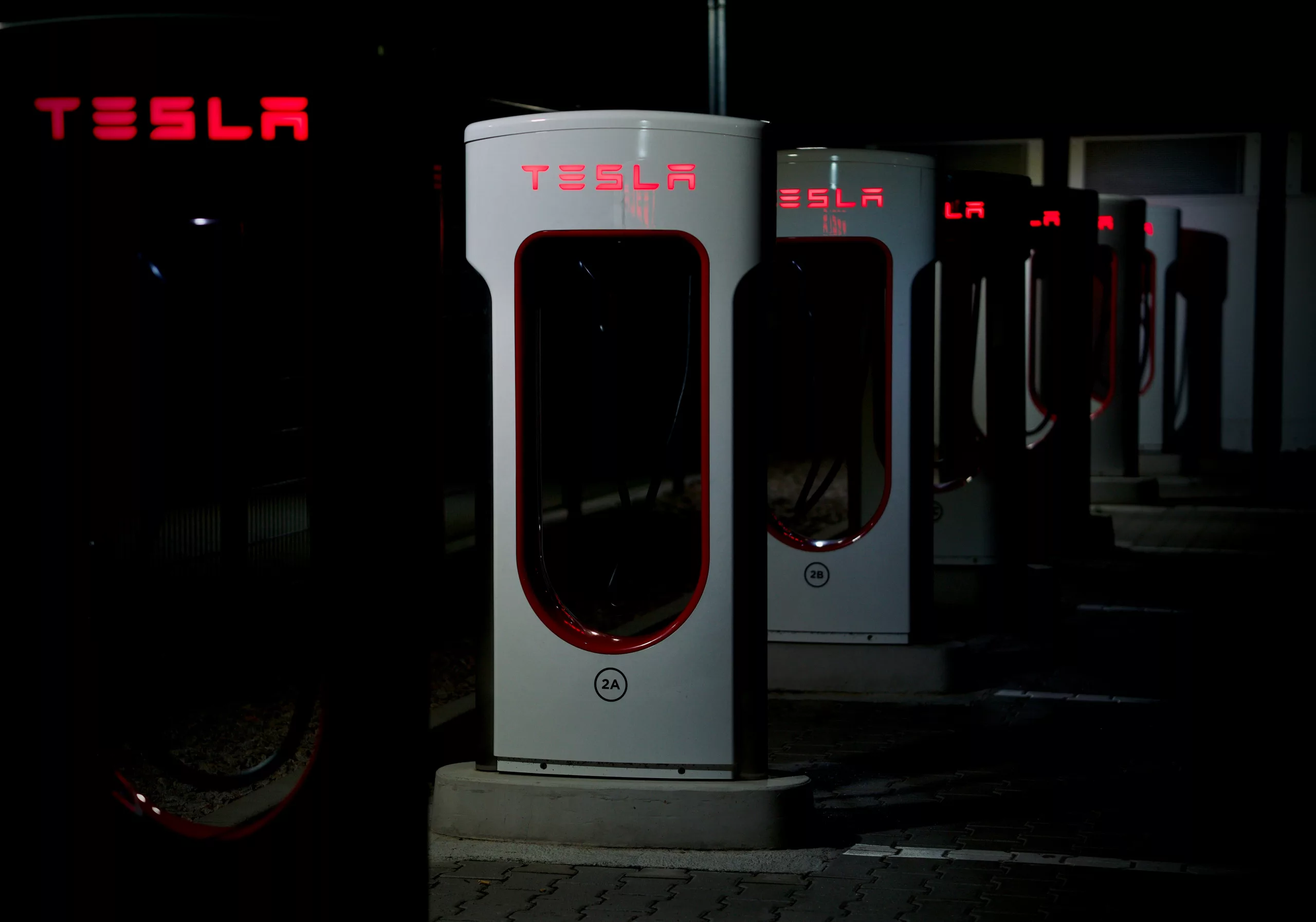Adapting Charging Practices for Non-Tesla Electric Vehicles
Ford‘s recent move to provide adapters for their EVs, allowing them to access Tesla‘s selective Supercharger network, has stirred some commotion. This development has been met with mixed reactions, particularly concerning the layout of Supercharger stations which traditionally suit the rear-driver side port of Tesla vehicles. The dilemma arises when Ford’s F-150 Lightnings and Mach-Es, with differently located charging ports, park adjacently, thereby hindering Tesla drivers from using adjacent Supercharger stalls if the station is at capacity.
Tesla Opens Up but at a Cost
Despite these integration challenges, Tesla appears relatively untroubled, having welcomed other manufacturers to its charging infrastructure in exchange for significant funding. This pot of money, running into billions, is earmarked for various enhancements to the network, including the introduction of version 4 (V4) chargers with longer cables, the construction of additional stations, and the expansion of existing sites. While this promises long-term improvements, current frequenters of Supercharger stations may face temporary inconveniences.
Seeking Solutions for a Smoother EV Charging Experience
Etiquette and Adjustments at Charging Stations
As electric vehicle enthusiasts seek to be considerate in shared charging spaces, some have proposed alternate parking configurations for non-Tesla EVs to minimize disruptions. However, constraints such as vehicle design and station layout mean that not every solution is universally applicable. Discovering spots with extra lateral room can be instrumental in facilitating a considerate charging setup, especially when Supercharger locations are busy or likely to become so.
Maximizing Available Space with a Conscious Approach
Locating ‘charge last’ spots, where charging can be done without occupying a slot meant for disabled drivers, presents one such solution. While this does imply using two spaces at times, it can keep other chargers free and available. It’s a delicate balance, and in less busy stations, where many stalls are readily accessible, the impact of these adjustments is negligible.
Handling Cable Length Limitations
Cable reach plays a pivotal role in determining where and how an EV can be charged. If cables were slightly longer, some EVs, such as the Chevy Bolt, would be able to utilize Supercharger stations as effortlessly as Tesla vehicles, thereby negating the need for any parking acrobatics.
Supporting a Diverse Charging Ecosystem
While many non-Tesla EV owners are eager to tap into the Supercharger network’s benefits, there’s a conscious effort among some, like Bolt drivers, to support other charging networks to prevent a monopoly. This approach helps sustain a competitive landscape in electric vehicle charging, although Superchargers remain a viable backup option or primary choice depending on geographical and situational factors.
Interim Solutions for a Streamlined Supercharger Experience
Redesigning Charger Layouts and Exploring Extensions
In anticipation of widespread implementation of V4 chargers, there are ongoing conversations about how existing stations might be modified to better accommodate various EV models. Simple changes, such as reconfiguring parking space lines or considering extensions for chargers, albeit an expensive option, can help reduce friction until more permanent solutions are rolled out. These innovations could involve longer cables on existing chargers or specialized stalls with extended cables to cater to the needs of different EVs.
Advocating for an Abundant Charging Future
Ultimately, the EV community hopes for a future where charging stations are so plentiful that conflicts over station access become a thing of the past. A robust expansion of the charging network can create an environment where EV drivers can recharge without inconvenience, ensuring a smooth and harmonious experience for all electric vehicle owners.
